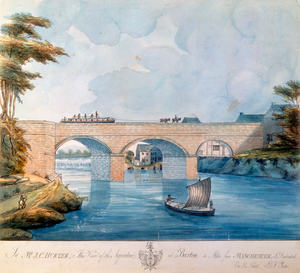
GUEST POST from Chateau G Pato
In the evolving world of business, the significance of diversity and inclusion (D&I) cannot be overstated. These principles are pivotal not only for building a dynamic workforce but also for steering successful organizational change. The interplay between D&I and change management creates a powerful synergy that drives innovation, fosters employee engagement, and enhances overall performance. In this article, we’ll explore the marriage of D&I principles with change management efforts, illustrated through two compelling case studies.
The Importance of Diversity and Inclusion in Change Management
Diversity as a Catalyst for Change
Diverse teams bring together individuals with varied backgrounds, perspectives, and skills, fueling creativity and problem-solving capabilities. When navigating change, a diverse workforce can anticipate and mitigate a wider array of challenges and opportunities.
Inclusion Ensures Commitment and Engagement
Inclusivity ensures that every employee feels valued and heard, which is critical during transitions. An inclusive approach to change management promotes transparency, trust, and collective ownership, leading to more sustainable and effective change.
Case Study 1: Transforming Customer Service at TelecomCorp
The Challenge
TelecomCorp, a leading telecommunications company, struggled with stagnant growth and declining customer satisfaction. The leadership team decided to overhaul their customer service model to revitalize the brand and improve customer experiences.
Scenario
The company’s workforce was diverse, but previously, this diversity was not leveraged effectively in decision-making processes. To achieve the desired transformation, TelecomCorp integrated D&I principles into their change management strategy.
Change Management Approach
1. Inclusive Leadership Training
- Executive leaders received coaching on inclusive leadership, ensuring they understood the value of every team member’s input.
2. Employee Resource Groups (ERGs)
- ERGs for various minority groups were established to facilitate dialogue and gather unique insights directly from frontline employees.
3. Open Feedback Channels
- Multiple channels for anonymous feedback were created to empower employees to share ideas and concerns without fear of retribution.
Outcome
The incorporation of D&I principles led to a surge in employee engagement and innovation. Frontline employees, who interacted directly with customers, provided key insights that informed new customer service policies. Customer satisfaction scores improved by 30% within a year, showcasing the power of a diverse and inclusive approach to change management.
Case Study 2: Gender Diversity in Manufacturing at AutoMakers Inc.
The Challenge
AutoMakers Inc., a prominent automobile manufacturer, aimed to introduce advanced manufacturing technologies to enhance productivity. The predominantly male workforce, however, showed resistance to change, citing concerns about job security and unfamiliarity with new technologies.
Scenario
Recognizing that a diverse and inclusive environment could ease the transition, AutoMakers Inc. focused on increasing gender diversity in their teams and fostering an inclusive workplace culture.
Change Management Approach
1. Targeted Recruitment
- The company launched initiatives to recruit more women into engineering and manufacturing roles, promoting gender diversity within the tech transition teams.
2. Mentorship Programs
-
- Mentorship programs pairing experienced employees with new hires, particularly women, were created to build confidence and share knowledge on new technologies.
3. Inclusive Communication Strategies
-
-
- Communication materials were crafted to address diverse concerns and learning styles, ensuring that all employees understood and felt comfortable with the changes.
-
Outcome
The infusion of gender diversity brought fresh perspectives that benefited the technology implementation process. Additionally, male employees showed greater acceptance as they observed the successful integration of female colleagues into traditionally male-dominated roles. This inclusive approach resulted in a smoother transition, with productivity increases of 25% following the technology rollout.
Key Takeaways and Best Practices
1. Leverage Diverse Perspectives
-
-
- Create structures that actively solicit and incorporate diverse viewpoints during planning and implementation phases of change.
-
2. Promote Inclusive Communication
-
-
- Use communication strategies that consider the diverse backgrounds of employees to ensure everyone comprehends and embraces the change.
-
3. Foster a Culture of Belonging
-
-
- Develop policies and initiatives that make every employee feel valued and critical to the organization’s success.
-
Conclusion
Incorporating diversity and inclusion principles in change management efforts is not just a moral imperative—it is a strategic advantage. As demonstrated by TelecomCorp and AutoMakers Inc., a diverse and inclusive approach can lead to highly engaged employees, innovative solutions, and tangible business improvements. As we move further into an era of continuous transformation, let us embrace D&I as core components of our change management frameworks. By doing so, we create resilient organizations poised for sustainable success.
SPECIAL BONUS: The very best change planners use a visual, collaborative approach to create their deliverables. A methodology and tools like those in Change Planning Toolkit™ can empower anyone to become great change planners themselves.
Image credit: Unsplash
![]() Sign up here to get Human-Centered Change & Innovation Weekly delivered to your inbox every week.
Sign up here to get Human-Centered Change & Innovation Weekly delivered to your inbox every week.













